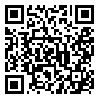Volume 22, Issue 4 (1-2024)
jhosp 2024, 22(4): 407-421 |
Back to browse issues page
Download citation:
BibTeX | RIS | EndNote | Medlars | ProCite | Reference Manager | RefWorks
Send citation to:



BibTeX | RIS | EndNote | Medlars | ProCite | Reference Manager | RefWorks
Send citation to:
Shahraki M, Esmaeili H. Identifying and Ranking the Risks of Using Artificial Intelligence Systems in Hospital Waste Management Using a Multi-Criteria Decision-Making Approach
A Case Study of Hospitals Affiliated with Zahedan University of Medical Sciences. jhosp 2024; 22 (4) :407-421
URL: http://jhosp.tums.ac.ir/article-1-6658-en.html
URL: http://jhosp.tums.ac.ir/article-1-6658-en.html
1- Associate Professor, Department of Industrial Engineering, Faculty of Engineering, University of Sistan and Baluchestan, Zahedan, Iran. *Corresponding Author Email: mr.shahraki@eng.usb.ac.ir
2- Master's student, Department of Industrial Engineering, Faculty of Engineering, University of Sistan and Baluchistan, Zahedan, Iran.
2- Master's student, Department of Industrial Engineering, Faculty of Engineering, University of Sistan and Baluchistan, Zahedan, Iran.
Abstract: (275 Views)
Background and Purpose: Artificial intelligence (AI) plays a crucial role in the optimal management of hospital waste, particularly in predicting the volume and type of waste generated. This study aims to identify and rank the risks associated with the use of AI systems in hospital waste management by employing a multi-criteria decision-making approach.
Methods: This descriptive, cross-sectional study was conducted in 2023 (1402 in the Iranian calendar) at two hospitals, Ali Ibn Abitaleb and Khatam al-Anbiah, in Zahedan. Ten hospital staff members were selected as expert participants for the Delphi panel. The Shannon entropy method was utilized for risk weighting, and the TOPSIS method was applied to rank the identified risks.
Results: Kendall's coordination coefficient was used to assess the level of consensus among the Delphi panel members, with the coefficient values for the first, second, and third Delphi rounds being 6.3, 7.1, and 7.3, respectively. The indicators were weighted using the Shannon entropy method, based on three criteria: impact intensity (0.3), probability of occurrence (0.4), and detection probability (0.32). The TOPSIS method was then employed to rank the identified risks, with the most significant risks being the need for necessary infrastructure (0.847), the requirement for accurate and complete data (0.751), and budget constraints (0.749).
Conclusion: By applying multi-criteria decision-making methods, healthcare managers can effectively identify and prioritize the risks associated with using AI systems in hospital waste management, enabling them to focus on strengthening waste management practices based on these priorities.
Methods: This descriptive, cross-sectional study was conducted in 2023 (1402 in the Iranian calendar) at two hospitals, Ali Ibn Abitaleb and Khatam al-Anbiah, in Zahedan. Ten hospital staff members were selected as expert participants for the Delphi panel. The Shannon entropy method was utilized for risk weighting, and the TOPSIS method was applied to rank the identified risks.
Results: Kendall's coordination coefficient was used to assess the level of consensus among the Delphi panel members, with the coefficient values for the first, second, and third Delphi rounds being 6.3, 7.1, and 7.3, respectively. The indicators were weighted using the Shannon entropy method, based on three criteria: impact intensity (0.3), probability of occurrence (0.4), and detection probability (0.32). The TOPSIS method was then employed to rank the identified risks, with the most significant risks being the need for necessary infrastructure (0.847), the requirement for accurate and complete data (0.751), and budget constraints (0.749).
Conclusion: By applying multi-criteria decision-making methods, healthcare managers can effectively identify and prioritize the risks associated with using AI systems in hospital waste management, enabling them to focus on strengthening waste management practices based on these priorities.
Type of Study: Original Article |
Subject:
سایر
Received: 2024/01/3 | Accepted: 2024/07/24 | Published: 2024/09/20
Received: 2024/01/3 | Accepted: 2024/07/24 | Published: 2024/09/20
| Rights and permissions | |
 |
This work is licensed under a Creative Commons Attribution-NonCommercial 4.0 International License. |





